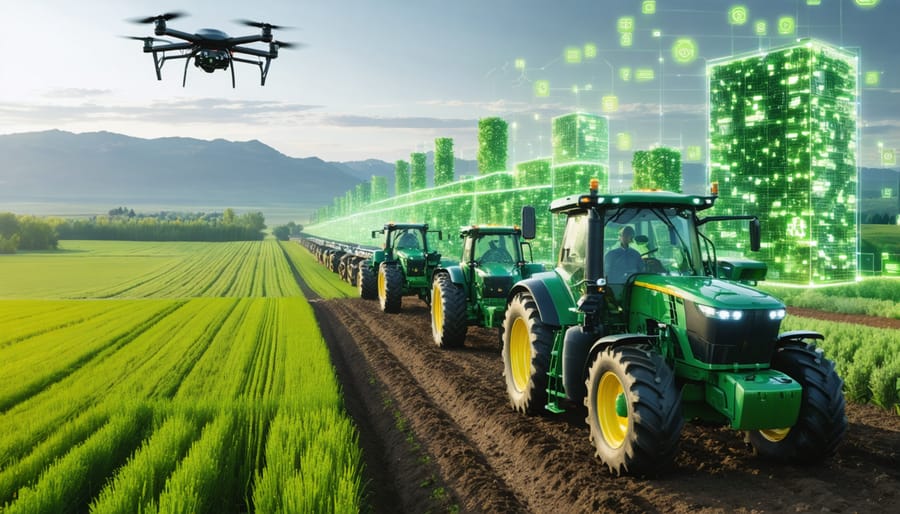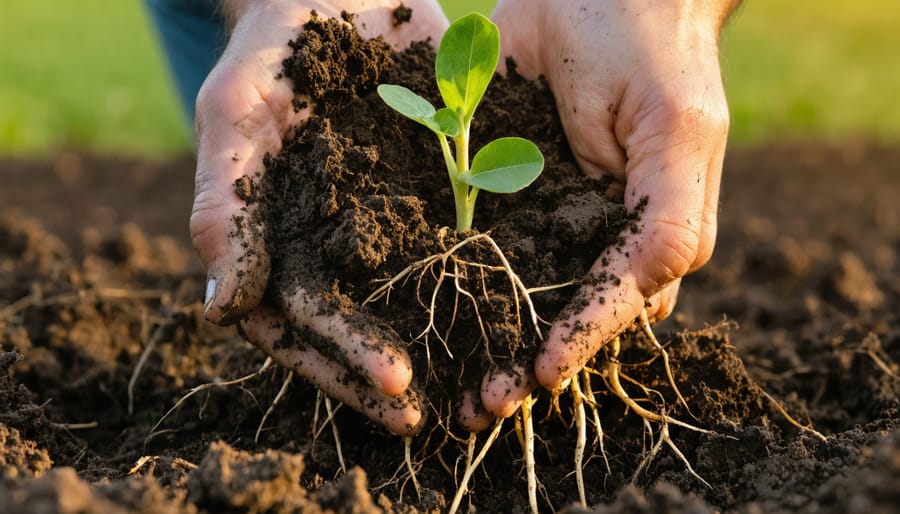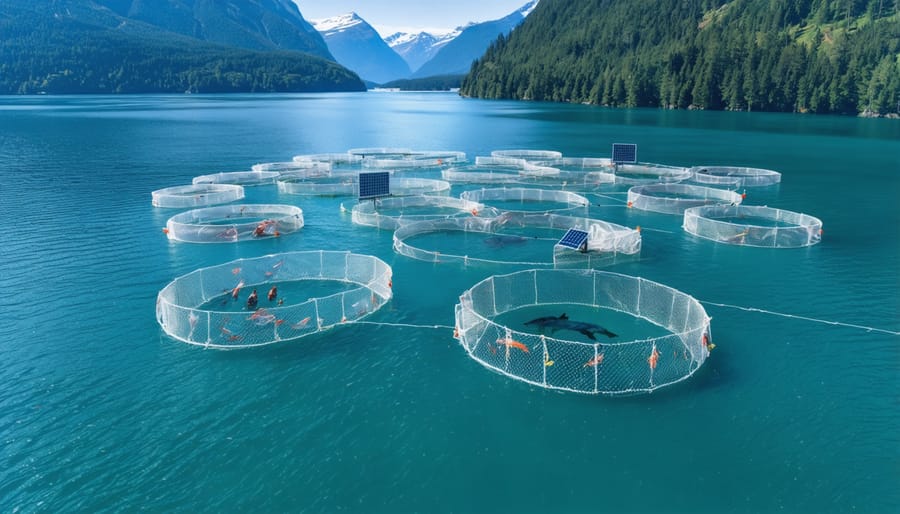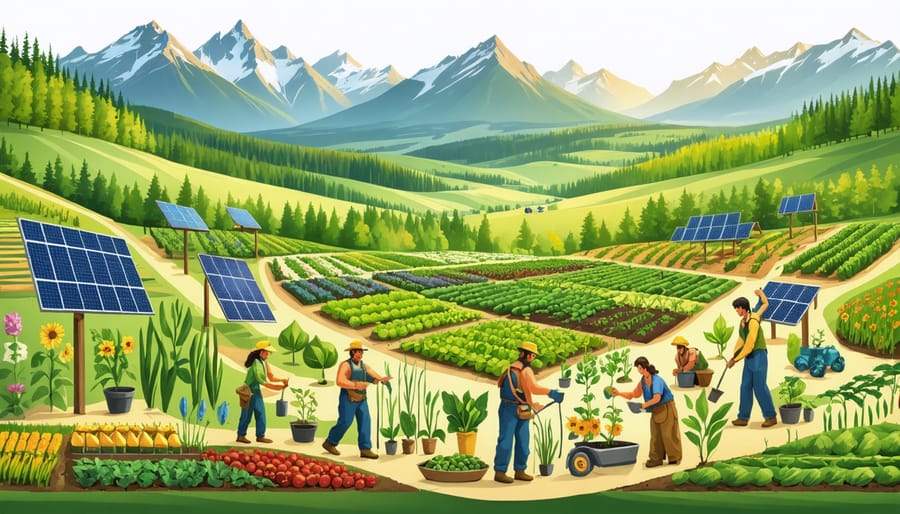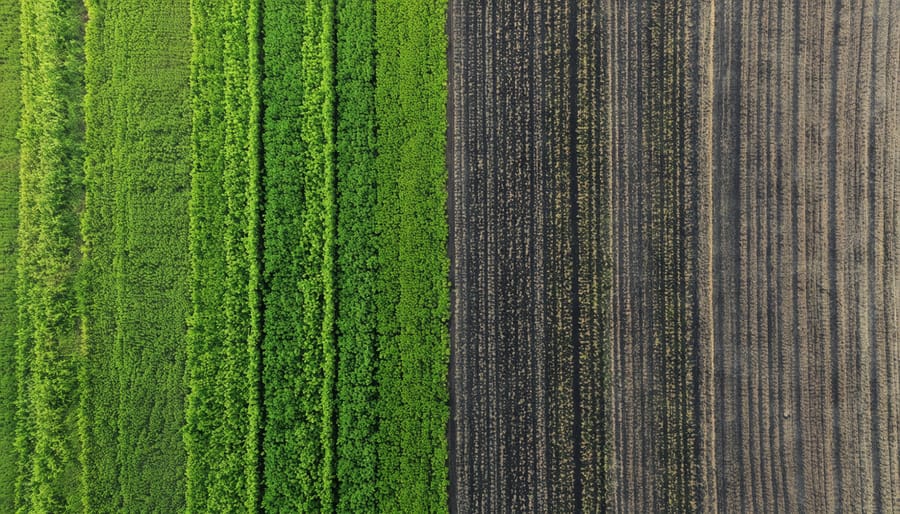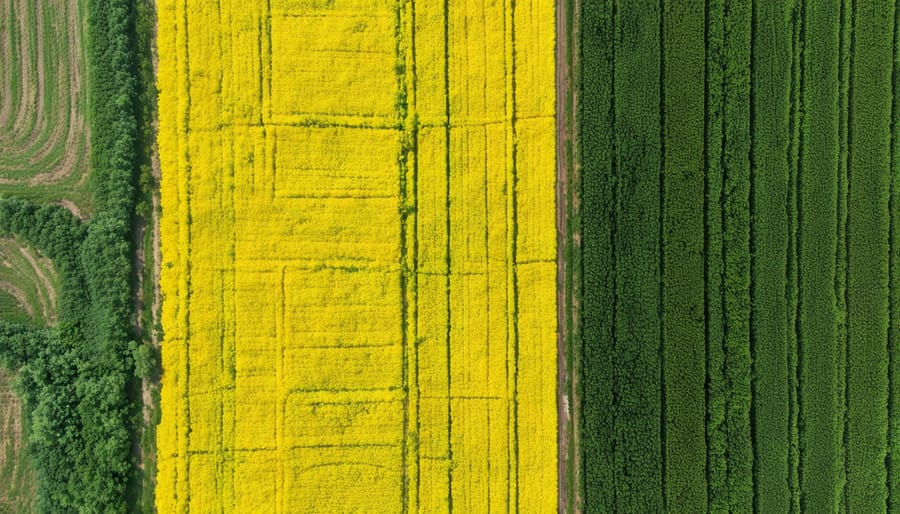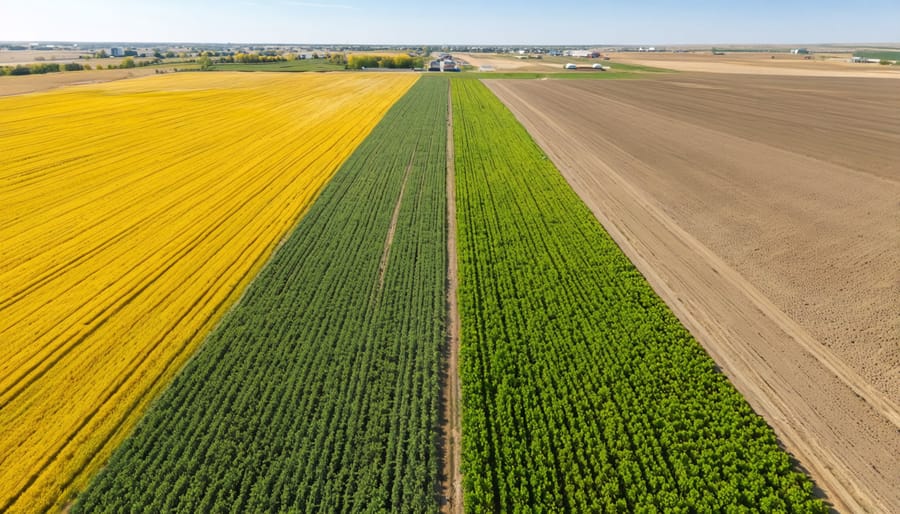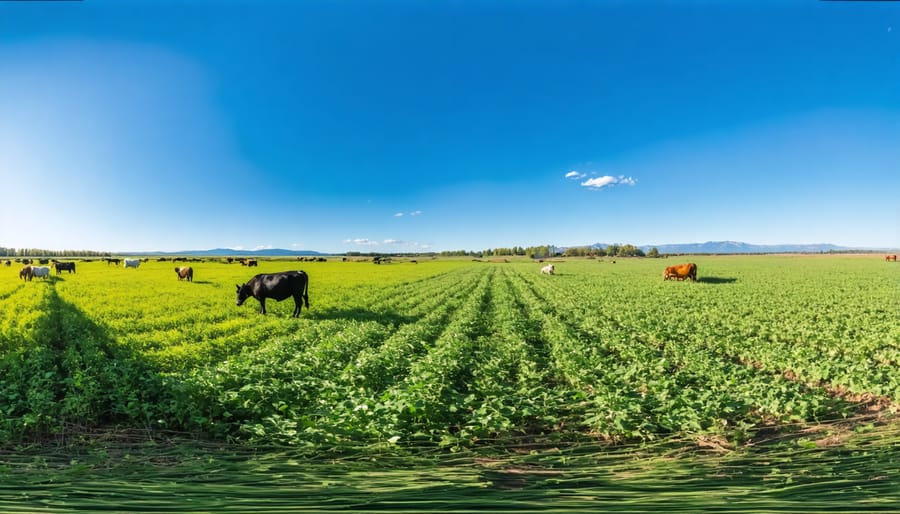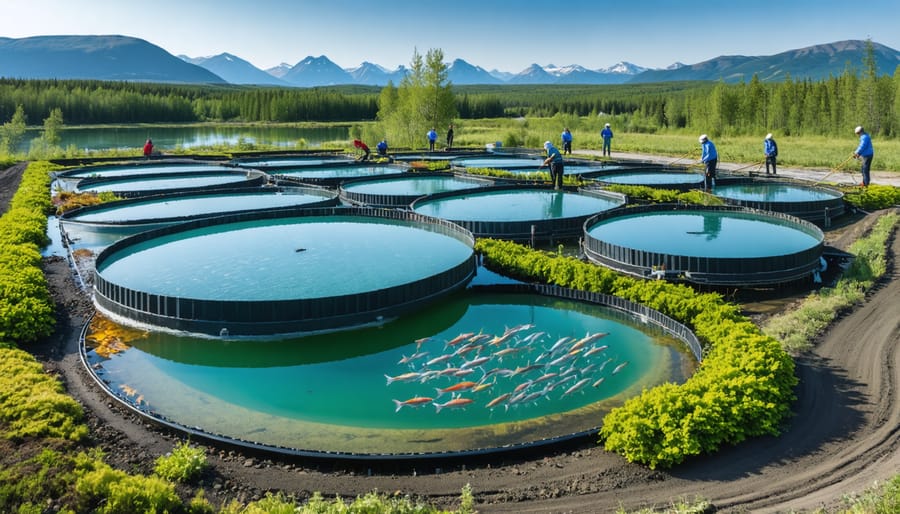Transforming Canada’s food systems demands bold innovation at every level – from soil to shelf. As climate pressures intensify and global food security challenges mount, our agricultural sector stands at a critical crossroads. Forward-thinking farmers across Alberta and beyond are pioneering smart technologies and regenerative practices that reimagine how we grow, process, and distribute food. From AI-powered precision agriculture that reduces water usage by 40%, to blockchain systems tracking produce from field to consumer, to vertical farming operations yielding 10 times more food per square meter, the future of farming is taking root today.
These innovations aren’t just about technology – they’re about building resilient, sustainable food networks that support local communities while meeting global demands. Alberta’s agricultural innovators are leading this charge, combining centuries of farming wisdom with cutting-edge solutions that boost yields while protecting our precious soil and water resources. Through collaborative research, knowledge-sharing networks, and strategic investments in agtech, we’re cultivating a food system that’s more efficient, transparent, and environmentally sound than ever before.
This evolution in how we produce and distribute food isn’t optional – it’s essential for feeding a growing population while preserving our agricultural heritage for future generations.
Smart Farming Technologies Transforming Local Food Production
Precision Agriculture Systems
Modern precision agriculture systems are revolutionizing how Canadian farmers manage their operations, combining GPS technology, advanced sensors, and data analytics to optimize crop yields while conserving resources. These smart farming solutions enable precise field mapping and targeted interventions, particularly valuable for Alberta’s diverse agricultural landscape.
GPS-guided equipment allows farmers to navigate fields with centimeter-level accuracy, reducing overlap in seeding, spraying, and harvesting operations. This technology typically results in 5-10% savings in input costs while minimizing soil compaction. Local farmer Mike Thompson from Lethbridge reports, “Since implementing GPS guidance, we’ve cut our fuel consumption by 15% and significantly reduced seed waste.”
Advanced soil sensors are transforming how we approach soil health optimization. These devices provide real-time data on moisture levels, nutrient content, and pH balance, enabling farmers to make informed decisions about irrigation and fertilization. Networks of wireless sensors can monitor entire fields, sending alerts when conditions require attention.
Data analytics platforms integrate information from multiple sources, including weather stations, satellite imagery, and soil sensors, to create comprehensive field management strategies. Prairie farmers are increasingly using these tools to predict optimal planting times, manage pest risks, and plan harvest schedules. This data-driven approach has helped many operations reduce water usage by up to 30% while maintaining or improving crop yields.
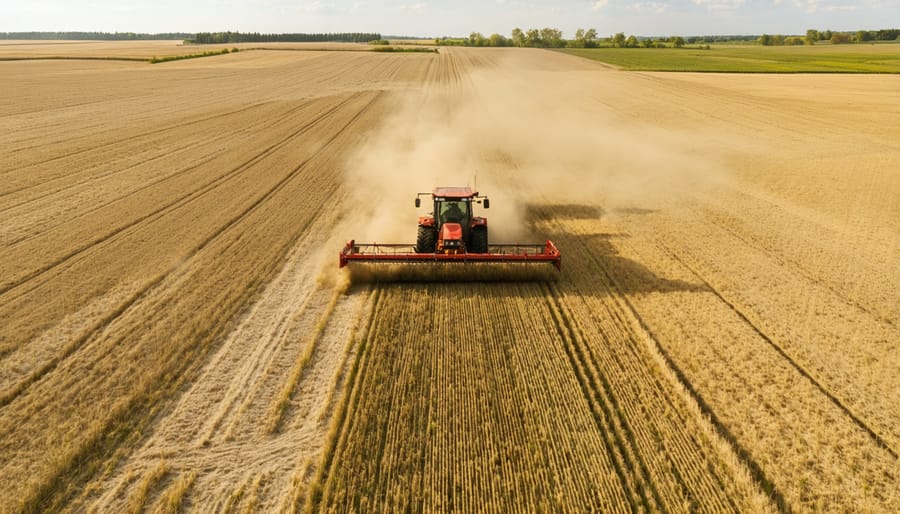
Automated Greenhouse Solutions
Modern greenhouse automation has revolutionized how we grow food in Canada’s variable climate. Smart climate control systems now enable year-round production, maintaining optimal growing conditions even during Alberta’s harsh winters. These systems continuously monitor temperature, humidity, and CO2 levels, making real-time adjustments to create the perfect environment for crop growth.
At the Richardson Family Farm near Lethbridge, automated greenhouse solutions have cut energy costs by 40% while increasing tomato yields by 25%. Their system uses AI-powered sensors to predict weather changes and adjust heating and cooling accordingly. “The technology practically pays for itself,” notes Sarah Richardson, “and we’re able to extend our growing season well into November.”
Smart irrigation systems are another game-changer for greenhouse operations. These systems use soil moisture sensors and weather data to deliver precise amounts of water and nutrients exactly when plants need them. Many Alberta growers are now incorporating drip irrigation with automated fertigation, reducing water usage by up to 70% compared to traditional methods.
The latest greenhouse automation tools also include mobile apps that allow farmers to monitor and control their operations remotely. Calgary-based greenhouse operator Mike Chen manages his 2-hectare facility entirely from his smartphone, receiving alerts about environmental changes and equipment status in real-time. “It’s like having an extra set of eyes on the crops 24/7,” he explains.
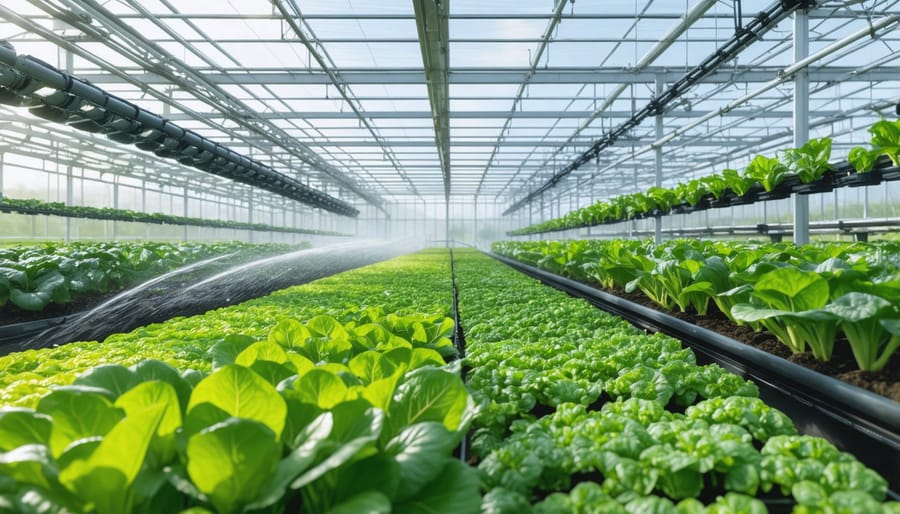
Sustainable Processing Innovations
Energy-Efficient Processing Equipment
Recent innovations in energy-efficient processing equipment are transforming how Canadian farms handle their harvests while reducing their environmental impact. Modern processing facilities are now incorporating variable frequency drives (VFDs) that can reduce energy consumption by up to 50% compared to traditional fixed-speed motors.
At Red Deer Valley Farms, owner Sarah Thompson recently upgraded to smart grain dryers that use advanced moisture sensors and automated controls. “We’ve cut our energy costs by 35% while maintaining perfect grain quality,” Thompson reports. These systems automatically adjust drying temperatures and fan speeds based on real-time moisture readings.
Heat recovery systems are another game-changer for Alberta’s food processors. By capturing and recycling waste heat from processing operations, facilities can significantly reduce their natural gas consumption. The Lethbridge Food Processing Hub demonstrated this by implementing a closed-loop heat recovery system that now heats their facility’s water using recovered process heat.
Solar-powered cold storage solutions are gaining traction across the prairies. These systems combine solar PV panels with high-efficiency cooling equipment, providing reliable temperature control while minimizing grid electricity usage. Several Manitoba farms have reported 40-60% reductions in cold storage energy costs after installing these systems.
For smaller operations, new modular processing units offer energy-efficient alternatives to traditional equipment. These units feature advanced insulation, LED lighting, and smart controls that optimize energy use based on processing loads. The initial investment is often offset within 3-5 years through reduced operating costs.
Many of these innovations qualify for federal and provincial clean technology grants, making them more accessible to Canadian farmers looking to upgrade their operations while reducing their carbon footprint.
Waste Reduction Technologies
Modern waste reduction technologies are revolutionizing how Canadian farms manage their resources and boost farm profitability through waste reduction. Leading the way are smart storage solutions equipped with sensors that monitor temperature, humidity, and ethylene levels, helping prevent spoilage in root cellars and storage facilities. These systems can extend produce shelf life by up to 40% while reducing energy consumption.
Automated sorting systems using artificial intelligence and machine vision are becoming increasingly popular among Alberta producers. These systems can quickly identify and separate imperfect produce for alternative markets or processing, ensuring maximum value from each harvest. Many local farms are also implementing biodigesters, which convert organic waste into renewable energy and nutrient-rich fertilizer.
Mobile apps and software platforms are helping farmers track inventory more effectively, allowing them to predict surplus and coordinate with food banks and secondary markets before produce spoils. Some innovative farms are using dehydration and processing technologies to transform imperfect produce into value-added products, creating new revenue streams while reducing waste.
Cold chain monitoring systems with real-time tracking capabilities ensure optimal conditions during transport, significantly reducing in-transit losses. These technologies use blockchain and IoT sensors to maintain transparency and quality throughout the distribution process.
For smaller operations, simplified versions of these technologies are available, such as smart storage containers and basic monitoring systems that can be implemented without significant infrastructure changes. Many regional agricultural extension services offer support and training for farmers interested in adopting these waste-reduction solutions.
Real Results: Alberta Success Stories
The Smith Family’s Smart Dairy Operation
Located just outside of Red Deer, Alberta, the Smith family has transformed their traditional dairy operation into a showcase of agricultural innovation. Three years ago, Tom and Sarah Smith made the bold decision to invest in automated milking systems and smart monitoring technology, a move that has revolutionized their 200-head dairy farm.
The heart of their operation features four robotic milking stations that operate 24/7, allowing their Holstein herd to be milked according to natural rhythms rather than rigid schedules. Each cow wears a smart collar that tracks vital health metrics, including rumination patterns, activity levels, and early signs of illness. This data-driven approach has helped the Smiths reduce veterinary costs by 30% while improving overall herd health.
“The technology lets us be proactive instead of reactive,” explains Sarah Smith. “We can spot potential health issues days before they become serious problems, and that’s been a game-changer for our operation.”
The farm’s monitoring system also tracks milk quality in real-time, measuring factors like protein content, fat levels, and somatic cell counts. This immediate feedback allows the Smiths to adjust feed formulations quickly and maintain consistent milk quality, which has earned them premium prices from their dairy cooperative.
Energy efficiency was another priority for the Smiths. Their barn features LED lighting with automated controls, and heat recovered from the milk cooling process is used to warm water for cleaning equipment. Solar panels installed on the barn roof offset approximately 40% of their electricity costs.
While the initial investment was substantial at $1.2 million, the Smiths report that labour costs have decreased by 25%, and milk production has increased by 15%. More importantly, the technology has allowed their children to become more involved in the family business, managing the data analytics side of the operation while maintaining the hands-on farming tradition.
“Modern dairy farming isn’t just about working harder,” Tom reflects. “It’s about working smarter and using technology to build a sustainable future for the next generation.”
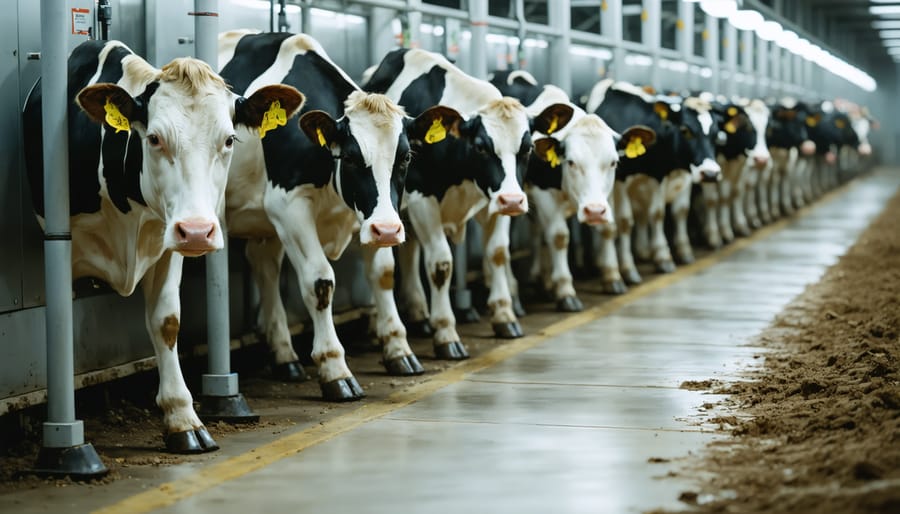
Valley View Farms’ Zero-Waste Innovation
Located just outside of Red Deer, Alberta, Valley View Farms has become a shining example of how zero-waste agriculture practices can transform traditional grain operations. Third-generation farmer Sarah Thompson implemented an innovative closed-loop system that has reduced waste by 95% while increasing operational efficiency by 30%.
The farm’s transformation began in 2021 with the installation of a state-of-the-art grain processing facility that incorporates AI-powered sorting technology. This system automatically separates damaged or undersized grains, which are then redirected to the farm’s biomass facility rather than being discarded.
“We used to lose about 8% of our harvest to waste,” explains Thompson. “Now, everything has a purpose. Even grain dust is collected and compressed into pellets for livestock feed.”
The farm’s most impressive innovation is its mobile grain rescue unit, which captures spillage during transport and handling. This Canadian-made technology uses vacuum technology to collect scattered grain, saving an estimated 2.5 tonnes of product annually that would otherwise be lost.
Valley View also partnered with local breweries to repurpose spent grains into high-protein livestock feed supplements. This initiative not only eliminates waste but generates an additional revenue stream, demonstrating how sustainability and profitability can go hand in hand.
The results speak for themselves: Valley View’s waste reduction initiatives have saved over $75,000 in annual operational costs while creating three new full-time positions to manage the recovery systems. The farm now serves as a demonstration site for other Alberta producers interested in implementing similar waste reduction technologies.
“The key is starting small and scaling up,” Thompson advises. “We began with one simple waste reduction goal and built upon our successes. It’s about progress, not perfection.”
As we’ve explored throughout this article, food systems innovation represents a transformative opportunity for Canadian agriculture. The benefits are clear and compelling: increased crop yields, reduced environmental impact, better resource management, and improved farm profitability. From precision agriculture technologies to sustainable farming practices, these innovations are helping Alberta farmers stay competitive while contributing to a more resilient food system.
The success stories we’ve shared from local farms demonstrate that innovation isn’t just about large-scale operations – farms of all sizes are finding ways to implement new technologies and practices that work for their specific needs. Whether it’s using soil sensors to optimize irrigation, implementing regenerative farming techniques, or adopting data-driven decision-making tools, each step toward innovation strengthens our agricultural community.
For those considering taking the first steps toward innovation, remember that you’re not alone. Alberta’s robust network of agricultural extension services, research institutions, and farmer-to-farmer mentorship programs provides valuable support for implementing new technologies and practices. The initial investment in innovation – whether in time, resources, or capital – consistently proves worthwhile through improved efficiency, reduced costs, and enhanced sustainability.
Looking ahead, the future of Canadian agriculture depends on our willingness to embrace change while maintaining our connection to the land and our farming heritage. As climate challenges and market demands evolve, innovation will become increasingly crucial for farm sustainability and success. The good news is that we’re seeing more accessible and affordable solutions emerge each year, making it easier for farms of all sizes to participate in this transformation.
We encourage you to start small, learn from others’ experiences, and gradually integrate innovations that make sense for your operation. Remember that every step toward modernizing our food systems contributes to a stronger, more sustainable agricultural sector for all Canadians. The time to embrace innovation is now – your farm, your community, and future generations will benefit from the positive changes we implement today.

